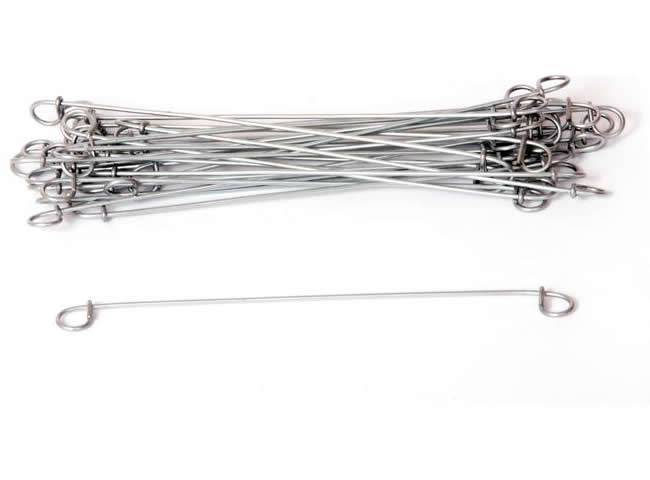
- Mobile Phone
- +8613931874955
- sales@cntcmetal.com
Durable 6-Foot Welded Wire Fencing for Enhanced Security and Animal Containment Solutions
The Versatility and Benefits of 6-Foot Welded Wire Fencing
When it comes to fencing options, the 6-foot welded wire fence stands out as a robust and versatile choice for various applications. Whether you're a homeowner looking to enhance your property’s security, a farmer needing to protect livestock, or a gardener wishing to keep critters at bay, this type of fencing has something to offer. In this article, we will explore the numerous benefits of 6-foot welded wire fencing, its varied applications, and tips for installation and maintenance.
What is 6-Foot Welded Wire Fencing?
Welded wire fencing consists of horizontal and vertical wires that are welded together at intersections to form a strong, grid-like structure. The 6-foot height is particularly effective for deterring larger animals and providing privacy while still allowing visibility through the fence. This type of fencing is commonly made from galvanized steel, which enhances its resistance to rust and corrosion, ensuring durability and longevity.
Benefits of 6-Foot Welded Wire Fencing
1. Durability One of the most significant advantages of welded wire fencing is its durability. The welding process creates a strong bond between the wires, making it less susceptible to bending or breaking compared to other types of fencing, such as chain link or wooden fences. With proper maintenance, a 6-foot welded wire fence can last for decades.
2. Versatility Welded wire fences can be used in a multitude of applications. They are ideal for containing livestock like cattle, sheep, and goats, as they prevent animals from escaping while allowing for good visibility and air circulation. Additionally, they can be used in gardens to keep pests such as rabbits and deer away from plants, ensuring a healthy garden landscape.
3. Security The height of 6 feet provides a significant barrier to intruders, making it a suitable option for securing residential properties. Its robust structure can deter unauthorized access while still being aesthetically pleasing. Many homeowners appreciate the combination of security and openness, as the welded wire allows for a clear view of the surroundings.
4. Low Maintenance Compared to wooden fences that require regular staining and treatment, welded wire fencing is relatively low maintenance. Once installed, it requires minimal upkeep. Occasionally checking for rust and making necessary repairs can keep it looking great and functioning well for many years.
5. Cost-Effective When compared to other fencing types, welded wire fencing is often more cost-effective. It provides excellent value for money, especially considering its durability and longevity. When protecting property and investments, the initial expenditure pays off over time through its low maintenance and replacement costs.
Applications of Welded Wire Fencing
6 foot welded wire fence

The applications of 6-foot welded wire fencing are endless. Farmers frequently use it to contain livestock and protect crops, while suburban homeowners utilize it to secure pets and children in yards. In residential areas, it can serve as an unobtrusive boundary, allowing neighbors to maintain a connection without compromising privacy. Gardeners benefit from its ability to deter various pests, ensuring their hard work and investment in plants is protected.
Commercial properties, particularly in industrial sectors, also capitalize on the strength of welded wire fencing for security. It can be combined with barbed wire at the top for additional security measures, making it a formidable barrier against trespassing.
Installation and Maintenance Tips
For a successful installation, consider the following steps
1. Planning Before installation, map out the area to determine the required length and number of posts. Check local regulations regarding property boundaries.
2. Material Selection Invest in high-quality welded wire fencing and sturdy posts. Using galvanized steel can increase longevity.
3. Post Installation Securely set your fence posts in the ground, ensuring they are straight and stable. Concrete can be used for added stability, especially in areas with soft soil.
4. Connecting the Fence Unroll the welded wire fencing and attach it to the posts, ensuring it is taut to prevent sagging.
5. Ongoing Maintenance Regularly inspect for signs of rust or damage. Cleaning the fence and applying rust-resistant paint, if necessary, can help maintain its appearance and functionality.
In conclusion, the 6-foot welded wire fence is a reliable and effective solution for a variety of fencing needs. Its durability, versatility, and low maintenance make it an attractive choice for property owners and farmers alike. Whether for security, containment, or aesthetic purposes, this fencing option proves to be an investment that pays off over time.
share:
-
Why Sacrificial Formwork Is Redefining Underground ConstructionNewsJun.06,2025
-
The Structural Dynamics of Modern Concrete: How Snake Spacers Revolutionize Flexible ReinforcementNewsJun.06,2025
-
Snake Spacers Smart-Lock Concrete Reinforcement with Surgical PrecisionNewsJun.06,2025
-
Snake Spacers: Reinforcement Precision for Modern Concrete ProjectsNewsJun.06,2025
-
Snake Spacers Powering Concrete's Structural DNANewsJun.06,2025
-
Slither into Success: Snake Spacers' Precision Bite for Unbreakable ReinforcementNewsJun.06,2025
-
Sacrificial Formwork: Building Stronger, Faster, and Safer StructuresNewsJun.06,2025



















